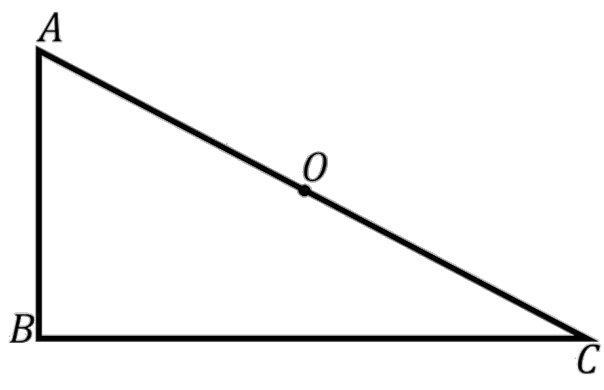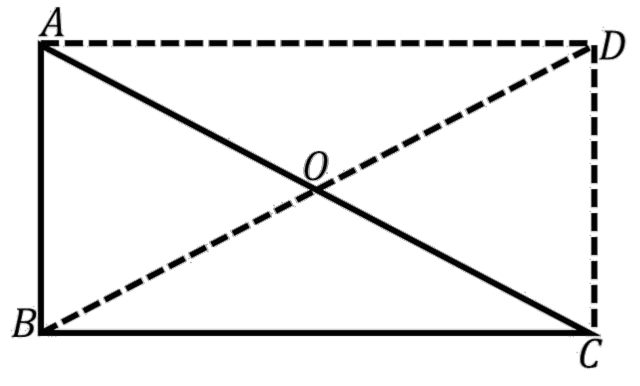NCERT Solutions for Maths Class 8 Chapter 3 Exercise 3.4 - FREE PDF Download
FAQs on NCERT Solutions for Class 8 Maths Chapter 3 Understanding Quadrilaterals Ex 3.4
1. What is a quadrilateral, and why is it important in geometry in Ex 3.4 Class 8?
In Ex 3.4 Class 8, a quadrilateral is a polygon with four sides and four angles. Understanding quadrilaterals is important because they form the basis for more complex shapes. They are commonly used in various real-life applications and geometry problems. Mastering quadrilaterals helps in solving Class 8 Maths Ex 3.4 advanced geometry topics.
2. What is the sum of the interior angles of a quadrilateral in Ex 3.4 Class 8?
The sum of the interior angles of any quadrilateral is always 360 degrees. This property is fundamental in geometry. It helps in solving problems related to quadrilaterals. Knowing this sum is essential for finding unknown angles, for more refer to Ex 3.4 Class 8.
3. What are the key properties of a parallelogram in Class 8 Maths Exercise 3.4?
In Class 8 Maths Exercise 3.4, a parallelogram, opposite sides are equal and parallel, and opposite angles are equal. Adjacent angles are supplementary, meaning they add up to 180 degrees. These properties are crucial for identifying and solving parallelogram problems.
4. How can you identify a rectangle among other quadrilaterals in Class 8 Maths Exercise 3.4?
A rectangle has opposite sides that are equal, and all angles are 90 degrees. Additionally, its diagonals are equal and bisect each other. These properties distinguish it from other quadrilaterals, refer to Class 8 Maths Exercise 3.4 for more solutions.
5. What makes a square different from other quadrilaterals in Class 8 Maths 3.4?
A square has all sides equal and all angles are 90 degrees. Its diagonals are equal and bisect each other at right angles. This makes it a special type of rectangle and rhombus. Refer Class 8 Maths 3.4.
6. What is the main characteristic of a rhombus in Class 8 Maths 3.4?
A rhombus has all sides equal and opposite angles equal. Its diagonals bisect each other at right angles. These properties differentiate it from other quadrilaterals in Class 8 Maths 3.4.
7. How do you define a trapezium in Class 8 Ex 3.4?
In Class 8 Ex 3.4, a trapezium is a quadrilateral with only one pair of parallel sides. This simple property makes it easy to identify. It is different from parallelograms, which have two pairs of parallel sides.
8. Why is understanding the properties of quadrilaterals important for students in Class 8 Ex 3.4?
Understanding quadrilateral properties from Class 8 Ex 3.4 helps in accurately solving geometric problems. It builds a foundation for advanced topics. This knowledge is essential for exams and real-life applications.
9. How are the diagonals of a rectangle and a square different in Class 8 Maths Ex 3.4?
According to Class 8 Maths Ex 3.4, both rectangles and squares have equal diagonals. However, in a square, the diagonals bisect each other at right angles. In a rectangle, they only bisect each other without forming right angles.
10. What should students focus on when studying Class 8 Maths Chapter 3 Exercise 3.4 Solutions?
Students should focus on understanding the properties of different quadrilaterals in Class 8 Maths Chapter 3 Exercise 3.4 Solutions. They need to practice problems related to sides, angles, and diagonals. These Solutions will help them solve questions accurately.
11. How does Exercise 3.4 help in real-life applications?
According to Class 8 Exercise 3.4, knowing quadrilateral properties is useful in fields like architecture and engineering. It helps in accurate geometric calculations. This knowledge is practical for designing and constructing various structures.
12. What are adjacent angles in a parallelogram, and why are they important in Class 8 Exercise 3.4?
In Class 8 Exercise 3.4, adjacent angles in a parallelogram share a common side. They are important because they are supplementary, adding up to 180 degrees. This property helps in solving angle-related problems.
13. How do the solutions provided by Vedantu help in understanding quadrilaterals from Class 8 Maths Chapter 3 Exercise 3.4 Solution?
Vedantu's solutions offer clear explanations for each problem in Class 8 Maths Chapter 3 Exercise 3.4 Solution. They help students understand concepts better. This builds confidence and improves problem-solving skills.



















